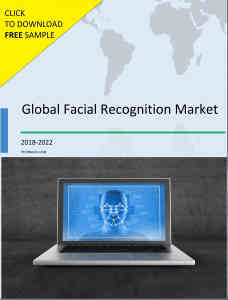From science fiction to present-day reality, facial recognition technology has evolved at an unprecedented rate over time to become a key innovation in biometrics and identity recognition. Today, facial recognition technology has emerged as a practical solution to address a host of identification and verification of identity related claims.
 This technology has the potential to make security measures, such as law enforcement and border control, faster and more sophisticated. This change of pace can be attributed to the significant advances in artificial intelligence (AI) and machine learning, alongside essential improvements in processing power that will persistently democratize and commoditize face recognition technology.
This technology has the potential to make security measures, such as law enforcement and border control, faster and more sophisticated. This change of pace can be attributed to the significant advances in artificial intelligence (AI) and machine learning, alongside essential improvements in processing power that will persistently democratize and commoditize face recognition technology.
Facing up to a massive transformation
Since its emergence in the 1960s, the facial recognition technology has been mostly relegated to government organizations and security agencies. However, as the world becomes more connected and our identities further digitize themselves away from PIN number and passwords, this transformative technology will likely service private firms and consumers, while finding a keen promotional and functional ally in smartphones and social media.
Although innovations such as iris scanner and fingerprint sensors are widely used, experts predict that facial recognition technology will soon rule the biometric security industry, offering a more refined level of data security altogether. Apple is a pioneer in adopting facial recognition technology for mobile devices, especially with last year’s iPhone X. Thanks to this groundbreaking smartphone, facial recognition has legitimately caught the public’s eye. Consequently, it won’t be surprising if more OEMs buy into this technology in the near future, rendering facial recognition technology as common as fingerprint scanners.
Related reading: The Evolution of Facial Recognition Technology
One technology, multiple applications
From airports and shopping centers to mobile phones and concert venues, face recognition technology finds application in all of these thanks to advances in technology. Although a bulk of the usage is in security, counter-terrorism and policing, many commercial firms are using it too. Fast food restaurants are allowing their consumers to pay for food using this technology, while some are using it as a predictive tool to remember an individual customer’s menu choices.
1) Airports are embracing facial recognition technology
Many airports in different countries across the world are deploying facial recognition technology to detect travelers entering the airport. Tech companies have developed algorithms that recognize and track a passenger’s face through the terminal until they board an airplane. This is based off electronic passports with an image and ID number.
2) Retail banking is another potential market
Using sophisticated AI algorithms, technology companies and major businesses have successfully adopted facial recognition systems for the banking environment. Lloyd Banking Group is one of the first to allow customers to use facial recognition or fingerprints to log into their bank account, with several other retail banks expected to follow suit soon. On the other hand, Digital banks, like Atom, has made biometric identification a standard protocol, citing it as a secure and faster way to sign up for the bank’s services.
3) Giving healthcare data a new look
The adoption of secure and fast authentication methods based on 3D facial recognition technology is driven broadly into healthcare IT solutions, including access to medical records, patient data portals, patient ID confirmation and lab results. This technology ensures that only authorized people can see the private medical information. 3D facial recognition technology represents a breakthrough compared to existing mobile and PC security services that healthcare IT has ever had to deal with.
4) Bringing facial recognition into the classroom
In modern education, facial recognition software helps improve the performance of both teachers and students. The technology used students’ webcams to analyze facial expressions and eye moments that determine whether learners are paying attention to a video lecture. Some of the premier educational institutions have already embraced this smart technology, and in 2018, it is likely to be widely adopted by more schools and institutions.



